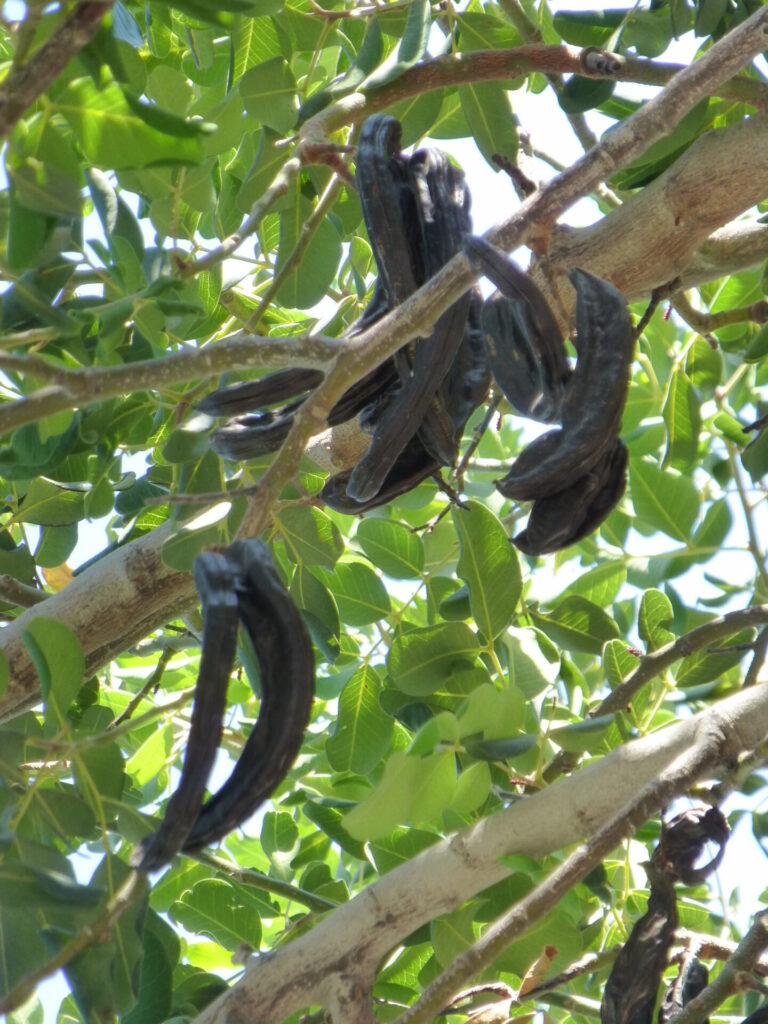This is from a Carobaceae classification and the carob pods are edible. Carob
(Ceratonia Siliqua) is member of the Fabaceae (Legume) family. (technically, locust trees are two
genera of plants, Robinia or Gleditsia and there are more than 22 species of locust trees.
The ripe, dried, and sometimes toasted pod is often ground into carob powder where the powder
and chips can be used as a chocolate alternative in most recipes. Carob flowers attract honey bees
and in areas with healthy bee populations the very distinct aroma, blooming trees will be covered
with thousands of bees. Information states that it is a dioecious tree, which means each tree bears
male or female flowers. This evergreen tree with pinnate leaves of two to six oval pairs can grow to
about 30 ft. tall. The trunk of the carob tree is a work of art by Mother Nature; with large, smooth,
muscular ribs of hard, dark wood, they can grow to be 5 feet wide (1.5 meters). This tree will tend to
grow in spread rather than height, giving it its distinctive protective look. The leaves are oval, dark
green and shiny and 12 to 30 centimeters long. The foliage provides welcome shade in hot
countries. They form a very effective curtain against noise and it’s an excellent fire barrier as its
leaves burn very poorly. The long, flat brown carob pods are 4 to 12 inches (10 to 30.5 cm.) long.
The trees are usually single sexed so you’ll need a male and female to produce pods (may be able
to identify which is which by a 3rd year of growth). One male tree can pollinate about 10 to 20
females. Male and hermaphroditic flowers emit a sweet odor that also attracts butterflies, wasps,
and flies. Female trees produce large, light pink blooms when mature.
Other known names are St. John’s Bread, African Bean tree, Old World Locust Tree and Carob
Bush. As a funny cultural note, the seeds are extremely hard, and they are called “karats” as they
were used as the basic measure to weigh jewels and such.






